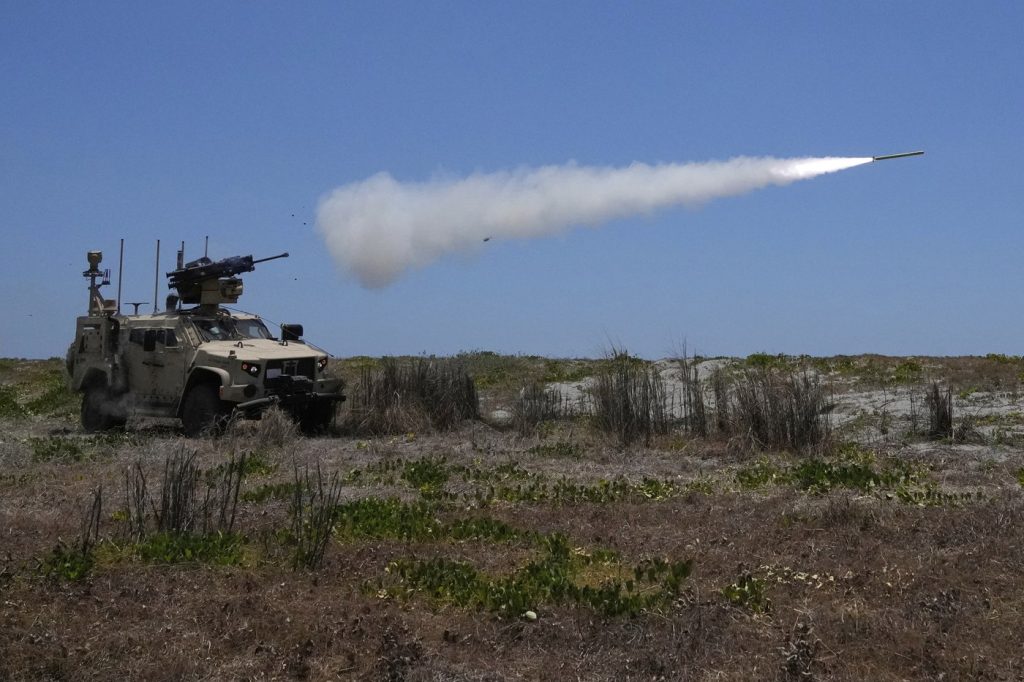BATAN ISLAND, Philippines (AP) — For the first time, the U.S. military has stationed an anti-ship missile launcher on Batan Island, located at the northern tip of the Philippine archipelago and just a sea border away from Taiwan. This high-precision weapon, part of an ongoing shift in U.S. military strategy in the region, was unloaded by Marines as tensions continue to rise in the area.
During live-fire drills on Sunday in Zambales province, which faces the disputed South China Sea, both U.S. and Philippine forces engaged in synchronized missile and artillery operations, successfully downing several drones simulating hostile aircraft. These exercises were part of the annual Balikatan drills, which not only simulate realistic combat conditions but also occur near critical geopolitical flashpoints in the ongoing rivalry between the U.S. and China.
Approximately 9,000 American personnel and 5,000 Filipino troops participated in the maneuvers, with an additional 260 Australian military members joining, alongside smaller delegations from countries such as Japan. The exercises were staged amid heightened tensions, particularly in light of China's recent military activity, including its aircraft carrier group sailing near Batanes shortly before the drills.
The U.S. military's deployment of the Navy Marine Expeditionary Ship Interdiction System on Batanes aims at enhancing sea denial and control capabilities in the region, according to U.S. Marine Lt. Gen. Michael Cederholm. He emphasized that the drills are focused on the defense of the Philippines, stating, “We’re not here practicing a war plan; we’re practicing for the defense of the Philippines.”
Both U.S. and Philippine officials denied that the exercises were directed at any specific adversary, including China, although the geopolitical implications were evident. When asked whether the missile system would be removed from Batanes following the exercises, Cederholm refrained from providing a clear answer, underscoring the unpredictability of U.S. military movements and their collaboration with the Philippine government.
China has expressed strong opposition to U.S. military operations in the region. Last year, a mid-range missile system deployed by the U.S. Army for joint exercises in the Philippines faced similar complaints from Beijing. This system includes at least 16 Standard Missile-6 and Tomahawk Land Attack Missiles previously repositioned to face potential challenges in the South China Sea.
As part of the combat exercises running from April 21 to May 9, American and Filipino forces will also train in the defense of Philippine islands, simulating responses to hostile sea assaults especially in the province of Palawan and northern Cagayan, close to Batanes. Philippine Brig. Gen. Michael Logico emphasized the importance of these exercises in enhancing deterrence against aggression in the Bashi Channel, mentioning that maintaining a balance of power is crucial to preserving peace in the region.
In a related development, the Chinese military conducted large-scale drills around Taiwan earlier this month, reaffirming its warning to the self-governing island against pursuing independence. This military presence underscores the heightened tensions and the stakes involved in the ongoing U.S.-China rivalry in the Asia-Pacific region.
The Philippines has a history of hosting significant U.S. military bases which were closed in the early 1990s following a Senate decision against extending their tenure. However, under a 1999 agreement, U.S. forces have returned for substantial joint exercises with their Filipino counterparts. Cederholm cited the longstanding U.S. commitment to the Philippines, illustrated by the presence of thousands of U.S. military personnel interred in the American cemetery in Manila as well as a strong dedication to treaty obligations.












